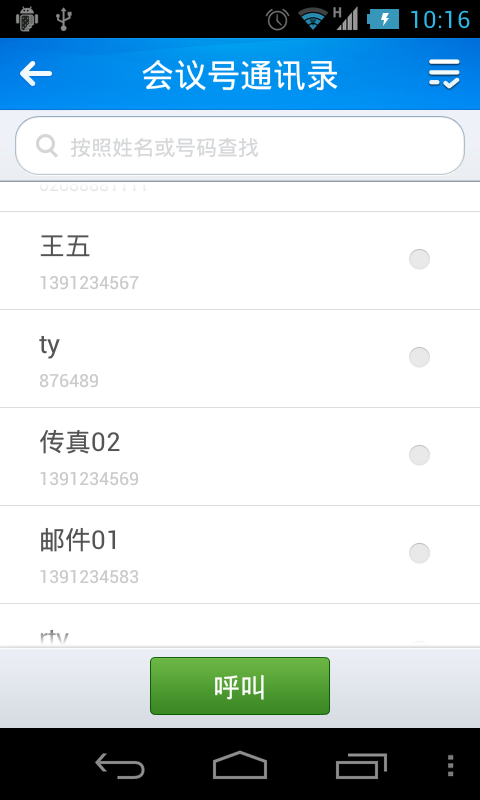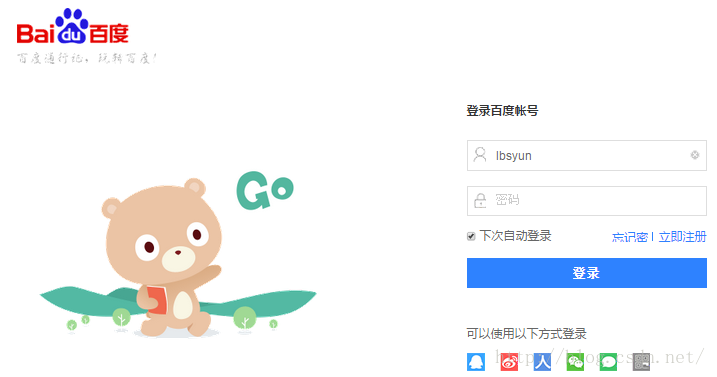編輯:關於Android編程
package com.ebupt.phonerecorddemo.server;
import java.lang.reflect.Method;
import android.content.Context;
import android.content.Intent;
import android.telephony.TelephonyManager;
import android.util.Log;
import android.view.KeyEvent;
import com.android.internal.telephony.ITelephony;
public class PhoneUtils {
static String TAG = "PhoneUtils";
/**
* 從TelephonyManager中實例化ITelephony,並返回
*/
static public ITelephony getITelephony(TelephonyManager telMgr)
throws Exception {
Method getITelephonyMethod = telMgr.getClass().getDeclaredMethod(
"getITelephony");
getITelephonyMethod.setAccessible(true);// 私有化函數也能使用
return (ITelephony) getITelephonyMethod.invoke(telMgr);
}
//自動接聽
public static void autoAnswerPhone(Context c,TelephonyManager tm) {
try {
Log.i(TAG, "autoAnswerPhone");
ITelephony itelephony = getITelephony(tm);
// itelephony.silenceRinger();
itelephony.answerRingingCall();
} catch (Exception e) {
e.printStackTrace();
try {
Log.e(TAG, "用於Android2.3及2.3以上的版本上");
Intent intent = new Intent("android.intent.action.MEDIA_BUTTON");
KeyEvent keyEvent = new KeyEvent(KeyEvent.ACTION_DOWN,
KeyEvent.KEYCODE_HEADSETHOOK);
intent.putExtra("android.intent.extra.KEY_EVENT", keyEvent);
c.sendOrderedBroadcast(intent,
"android.permission.CALL_PRIVILEGED");
intent = new Intent("android.intent.action.MEDIA_BUTTON");
keyEvent = new KeyEvent(KeyEvent.ACTION_UP,
KeyEvent.KEYCODE_HEADSETHOOK);
intent.putExtra("android.intent.extra.KEY_EVENT", keyEvent);
c.sendOrderedBroadcast(intent,
"android.permission.CALL_PRIVILEGED");
Intent localIntent1 = new Intent(Intent.ACTION_HEADSET_PLUG);
localIntent1.addFlags(Intent.FLAG_ACTIVITY_NO_HISTORY);
localIntent1.putExtra("state", 1);
localIntent1.putExtra("microphone", 1);
localIntent1.putExtra("name", "Headset");
c.sendOrderedBroadcast(localIntent1,
"android.permission.CALL_PRIVILEGED");
Intent localIntent2 = new Intent(Intent.ACTION_MEDIA_BUTTON);
KeyEvent localKeyEvent1 = new KeyEvent(KeyEvent.ACTION_DOWN,
KeyEvent.KEYCODE_HEADSETHOOK);
localIntent2.putExtra("android.intent.extra.KEY_EVENT",
localKeyEvent1);
c.sendOrderedBroadcast(localIntent2,
"android.permission.CALL_PRIVILEGED");
Intent localIntent3 = new Intent(Intent.ACTION_MEDIA_BUTTON);
KeyEvent localKeyEvent2 = new KeyEvent(KeyEvent.ACTION_UP,
KeyEvent.KEYCODE_HEADSETHOOK);
localIntent3.putExtra("android.intent.extra.KEY_EVENT",
localKeyEvent2);
c.sendOrderedBroadcast(localIntent3,
"android.permission.CALL_PRIVILEGED");
Intent localIntent4 = new Intent(Intent.ACTION_HEADSET_PLUG);
localIntent4.addFlags(Intent.FLAG_ACTIVITY_NO_HISTORY);
localIntent4.putExtra("state", 0);
localIntent4.putExtra("microphone", 1);
localIntent4.putExtra("name", "Headset");
c.sendOrderedBroadcast(localIntent4,
"android.permission.CALL_PRIVILEGED");
} catch (Exception e2) {
e2.printStackTrace();
Intent meidaButtonIntent = new Intent(
Intent.ACTION_MEDIA_BUTTON);
KeyEvent keyEvent = new KeyEvent(KeyEvent.ACTION_UP,
KeyEvent.KEYCODE_HEADSETHOOK);
meidaButtonIntent.putExtra(Intent.EXTRA_KEY_EVENT, keyEvent);
c.sendOrderedBroadcast(meidaButtonIntent, null);
}
}
}
//自動掛斷
public static void endPhone(Context c,TelephonyManager tm) {
try {
Log.i(TAG, "endPhone");
ITelephony iTelephony;
Method getITelephonyMethod = TelephonyManager.class
.getDeclaredMethod("getITelephony", (Class[]) null);
getITelephonyMethod.setAccessible(true);
iTelephony = (ITelephony) getITelephonyMethod.invoke(tm,
(Object[]) null);
// 掛斷電話
iTelephony.endCall();
} catch (Exception e) {
e.printStackTrace();
}
}
}
package com.android.internal.telephony;
/**
* Interface used to interact with the phone. Mostly this is used by the
* TelephonyManager class. A few places are still using this directly.
* Please clean them up if possible and use TelephonyManager instead.
* {@hide}
*/
interface ITelephony {
/**
* End call or go to the Home screen
* @return whether it hung up
*/
boolean endCall();
/**
* Answer the currently-ringing call.
*
* If there's already a current active call, that call will be
* automatically put on hold. If both lines are currently in use, the
* current active call will be ended.
*
* TODO: provide a flag to let the caller specify what policy to use
* if both lines are in use. (The current behavior is hardwired to
* "answer incoming, end ongoing", which is how the CALL button
* is specced to behave.)
*
* TODO: this should be a oneway call (especially since it's called
* directly from the key queue thread).
*/
void answerRingingCall();
/**
* Silence the ringer if an incoming call is currently ringing.
* (If vibrating, stop the vibrator also.)
*
* It's safe to call this if the ringer has already been silenced, or
* even if there's no incoming call. (If so, this method will do nothing.)
*
* TODO: this should be a oneway call too (see above).
* (Actually *all* the methods here that return void can
* probably be oneway.)
*/
void silenceRinger();
/**
* Allow mobile data connections.
*/
boolean enableDataConnectivity();
/**
* Disallow mobile data connections.
*/
boolean disableDataConnectivity();
/**
* Report whether data connectivity is possible.
*/
boolean isDataConnectivityPossible();
}
package com.ebupt.phonerecorddemo.server;
import android.app.Service;
import android.content.BroadcastReceiver;
import android.content.Context;
import android.content.Intent;
import android.telephony.TelephonyManager;
import android.util.Log;
public class PhoneReceiver extends BroadcastReceiver {
String TAG = "PhoneReceiver";
@Override
public void onReceive(Context context, Intent intent) {
TelephonyManager tm = (TelephonyManager) context
.getSystemService(Service.TELEPHONY_SERVICE);
switch (tm.getCallState()) {
case TelephonyManager.CALL_STATE_OFFHOOK:// 電話打進來接通狀態;電話打出時首先監聽到的狀態。
Log.i("onCallStateChanged", "CALL_STATE_OFFHOOK");
break;
case TelephonyManager.CALL_STATE_RINGING:// 電話打進來狀態
Log.i("onCallStateChanged", "CALL_STATE_RINGING");
PhoneUtils.autoAnswerPhone(context,tm);
break;
case TelephonyManager.CALL_STATE_IDLE:// 不管是電話打出去還是電話打進來都會監聽到的狀態。
Log.i("onCallStateChanged", "CALL_STATE_IDLE");
break;
}
}
}
 Android通訊錄開發之刪除功能的實現方法
Android通訊錄開發之刪除功能的實現方法
無論是Android開發或者是其他移動平台的開發,ListView肯定是一個大咖,那麼對ListView的操作肯定是不會少的,上一篇博客介紹了如何實現全選和反選的功能,本
 Android學習筆記4 Activity的生命周期
Android學習筆記4 Activity的生命周期
1 activity的聲明周期 安卓程序的最重要三個狀態為Resumed/Paused/Stopped, 絕大多數時間程序都會在這3個狀態間切換. 安卓程
 Android--百度地圖密鑰申請+環境配置(一)
Android--百度地圖密鑰申請+環境配置(一)
簡介在使用百度地圖SDK為您提供的各種LBS能力之前,您需要獲取百度地圖移動版的開發密鑰,該密鑰與您的百度賬戶相關聯。因此,您必須先有百度帳戶,才能獲得開發密鑰。並且,該
 Android加載Gif動畫實現代碼
Android加載Gif動畫實現代碼
Android加載Gif動畫如何實現?相信大家都很好奇,本文就為大家揭曉,內容如下<?xml version=1.0 encoding=utf-8?